Is it your dream to bring home a new bloodhound puppy to your family? Wondering the important steps to take to ensure your puppy is happy and healthy? In this bloodhound progression guide, you will learn about breed growth, milestones, and training tips to help you train the perfect pup. Read on to learn more!
Bloodhound: Breed Summary
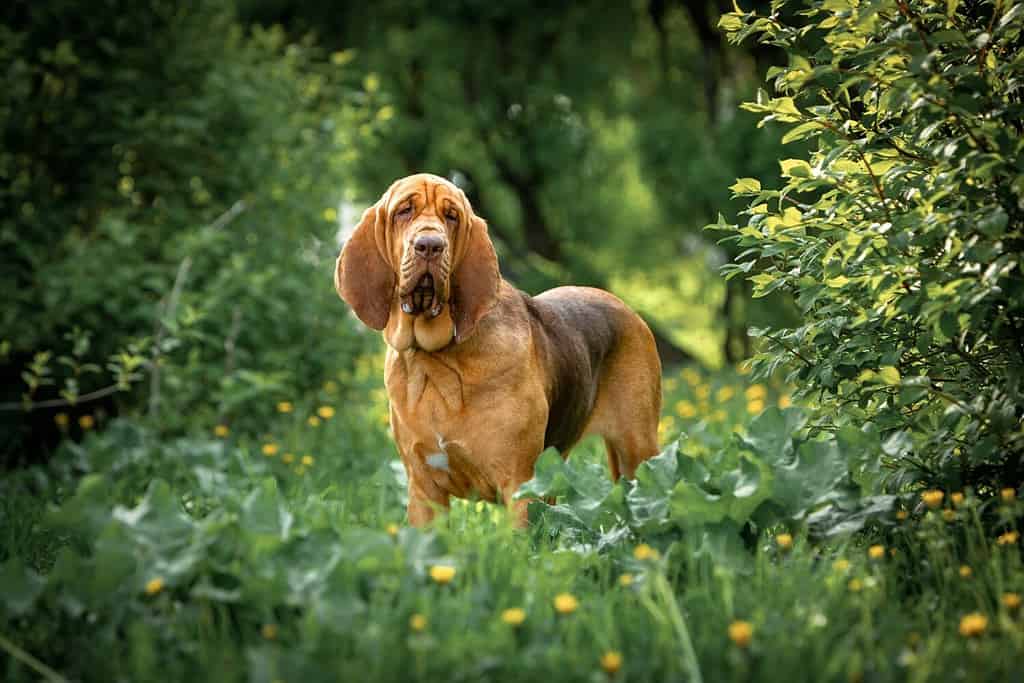
Many people easily recognize bloodhounds because of their droopy eyes and skin.
©Glikiri/Shutterstock.com
The bloodhound is a popular dog breed that makes a great family pet and working dog. Western Europeans developed the bloodhound over 1,000 years ago. They are widely popular for their uncanny ability to track humans. Law enforcement relies on them heavily for their tracking abilities because they have over 300 million receptors in their noses. In fact, bloodhound findings are often admissible in courtrooms across the United States.
Bloodhounds are intelligent dogs with high energy and working drive. They are affectionate and loving in nature, making them excellent family dogs. While often used in law enforcement, bloodhounds also make excellent tracking partners for hunters. Considered a large dog breed, bloodhounds have short fur with colors ranging from black and tan, liver and tan, and red. Their most recognizable trait is a long, wrinkled face and loose skin. They also have long, drooping ears and deep-set eyes with a solemn, regal expression.
Bloodhound Progression: Growth Chart
Below is a growth chart ranging from two to 15 months, comparing the bloodhound male and female weights. This chart is an estimation, and individual dogs may vary in weight. With any dog breed, remember to maintain a balanced diet, exercise, and consistent vet visits to ensure a healthy weight for your puppy.
| Age | Bloodhound Male Weight | Bloodhound Female Weight |
|---|---|---|
| 2 Months | 20-30 lbs | 17-25 lbs |
| 3 Months | 30-45 lbs | 25-35 lbs |
| 4 Months | 40-50 lbs | 35-47 lbs |
| 5 Months | 50-65 lbs | 40-57 lbs |
| 6 Months | 60-70 lbs | 50-70 lbs |
| 7 Months | 70-77 lbs | 60-70 lbs |
| 8 Months | 75-85 lbs | 60-85 lbs |
| 9 Months | 80-90 lbs | 70-87 lbs |
| 10 Months | 85-100 lbs | 70-95 lbs |
| 11 Months | 90-110 lbs | 75-97 lbs |
| 12 Months | 90-110 lbs | 80-100 lbs |
| 15 Months | 90-115 lbs | 80-100 lbs |
When Will My Bloodhound Stop Growing?
Typically, bloodhounds stop growing between 12-18 months. As always, weight can vary based on diet, exercise, and genetics. Plan to discuss your dog’s diet with your veterinarian to ensure proper food and exercise amounts.
Don’t forget to provide plenty of water since bloodhounds are an active breed. Generally, a bloodhound can eat between four and eight cups of dry dog food per day, but this is based on activity level, size, weight, and food brand.
How Big Will My Bloodhound Be When It’s Fully Grown?
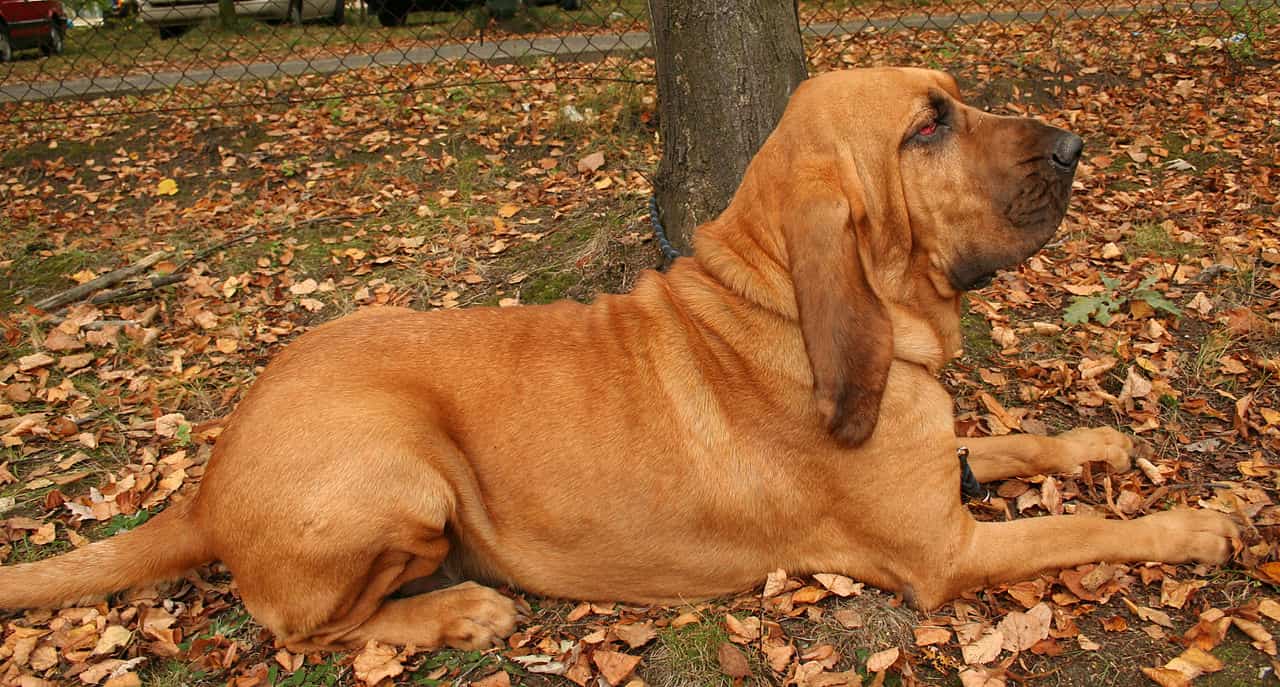
The bloodhound was the first police dog used when capturing serial killers.
©Pleple2000 / Creative Commons – License
Expect your adult bloodhound to weigh between 80-115 pounds. A healthy male is around 90-115 pounds and stands 25-27 inches at the shoulder. A healthy female is around 80-100 pounds and stands 23-25 inches at the shoulder.
When Should My Bloodhound Be Spayed or Neutered?
The ideal time to spay or neuter a bloodhound can depend on various factors like age, health, activity level, and lifestyle. For larger dogs like bloodhounds, professionals recommend waiting until your dog reaches sexual maturity. This is generally around 12 to 18 months of age.
Spaying or neutering your bloodhound helps prevent unwanted behaviors and can contribute to better long-term health. Consult with your veterinarian to determine the most appropriate timing based on your individual dog’s circumstances.
When Should My Bloodhound Be House Broken?
Begin potty training your bloodhound immediately. This is a crucial part of your puppy’s early development, so establishing a potty routine is important from the first day you bring your pup home. When it comes to potty training, consistency is key.
The bloodhound is an intelligent dog breed with a desire to please. Always reward good behavior with positive reinforcement. When your puppy does its business outside, reward it with a treat, praise, and affection. Remain attentive with cues that may signal your puppy needs to relieve itself. Some of these cues include dancing, running around, and circling. Eventually, they will begin to alert you by standing at the door that leads them outside.
To set your puppy up for success, stay on top of their potty routine and take them outside whenever there is a change in activity throughout the day.
When Should My Bloodhound Stop Eating Puppy Food?

Bloodhounds have more scent receptors than any other dog breed.
©Lakshmi3/iStock via Getty Images
Generally, large dog breeds switch to adult dog food between nine and 12 months of age. Your bloodhound should eat nutrient-dense dog food with high-quality ingredients to ensure proper growth and development. Be careful not to overfeed, as this is dangerous to your dog’s weight and overall health. High-energy dog breeds also need a food packed with protein to help with an active lifestyle.
As always, discuss with your vet about your dog’s specific lifestyle, activity level, and health to determine the proper amount of food and when to switch to adult dog food.
Bloodhound Progression: When Will My Bloodhound Start Losing Teeth?
Like other large dog breeds, bloodhounds typically start losing their puppy teeth around three to four months, and permanent teeth should all erupt by six months. The teething process can vary from one dog to another, but it often starts around the four-month mark.
During this time, you may notice an increase in chewing habits, more drooling, and possible discomfort. To help, provide appropriate chew toys to help soothe their gums and encourage healthy chewing behavior.
When Should I Start Training My Bloodhound?
To build a strong foundation, begin training your bloodhound the day you bring it home. Most people bring a new puppy home around eight to nine weeks of age. Start training while your puppy is receptive and open to learning new behaviors. This will ensure a well-trained dog and a better bond between you and your pup.
With the initial training, also start socializing your puppy immediately. Take them to new locations, let them meet new dogs, and introduce them to people. This will help them adapt to new surroundings quicker, and they will behave in future social settings.
What Commands Should I Teach My Bloodhound First?
Start with basic commands like “sit” and “stay.” These are easy, repetitive commands that your puppy can comprehend quickly. Once the basics are established, move to more challenging commands like “come,” “leave it,” and “lay down.”
Remember to train your bloodhound with positive reinforcement using high praise, enthusiasm, and treats.
Common Health Issues Your Bloodhound May Experience
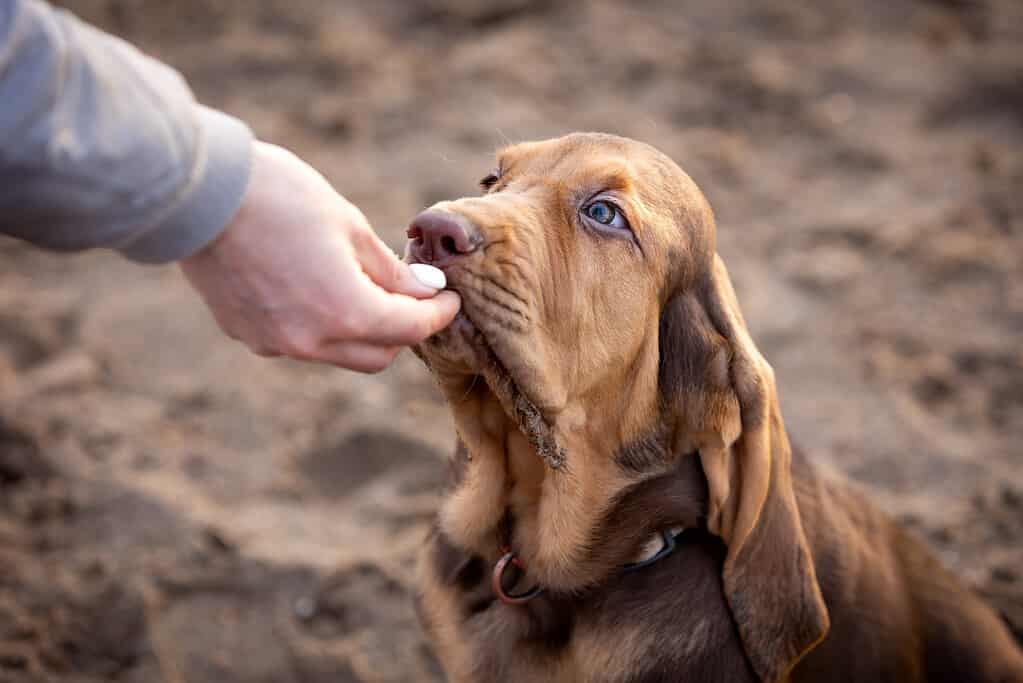
Bloodhounds can track scents that are more than 12 days old.
©Evgenia Glinskaia/iStock via Getty Images
The following is a list of health issues a bloodhound is at risk of developing:
- Hip dysplasia
- Elbow dysplasia
- Bloating
- Heart conditions
- Eye conditions
- Skin conditions
If you notice behavior changes or signs of a problem with your dog, consult your vet immediately.
Picture of a Bloodhound as a Puppy
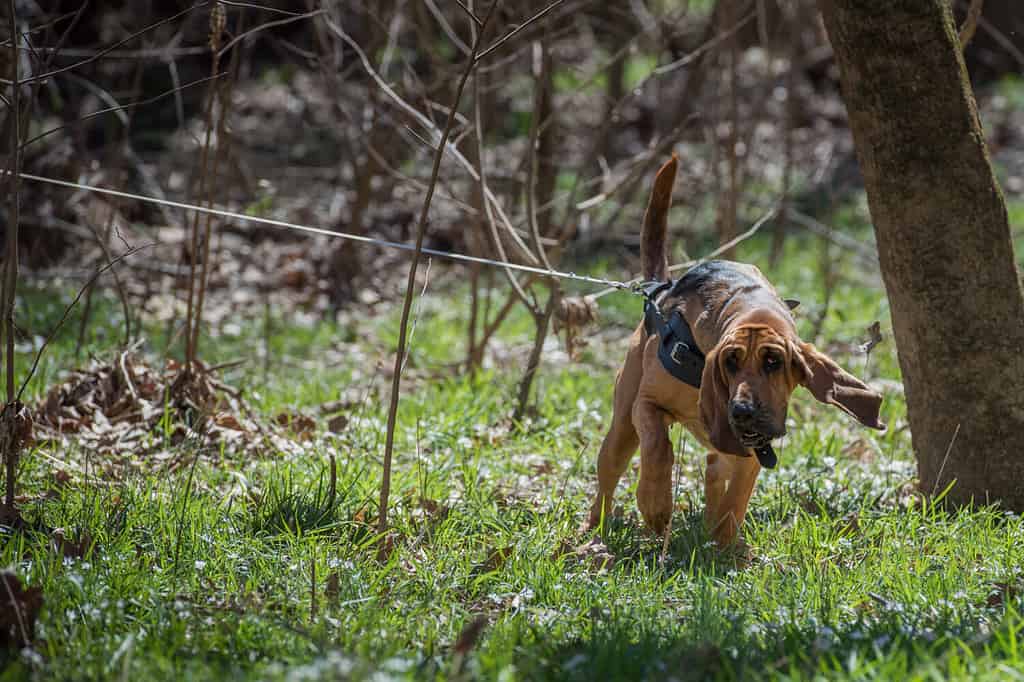
Bloodhounds set the world record for the longest dog ears.
©NSC Photography/Shutterstock.com
Picture of a Bloodhound at 6 Months
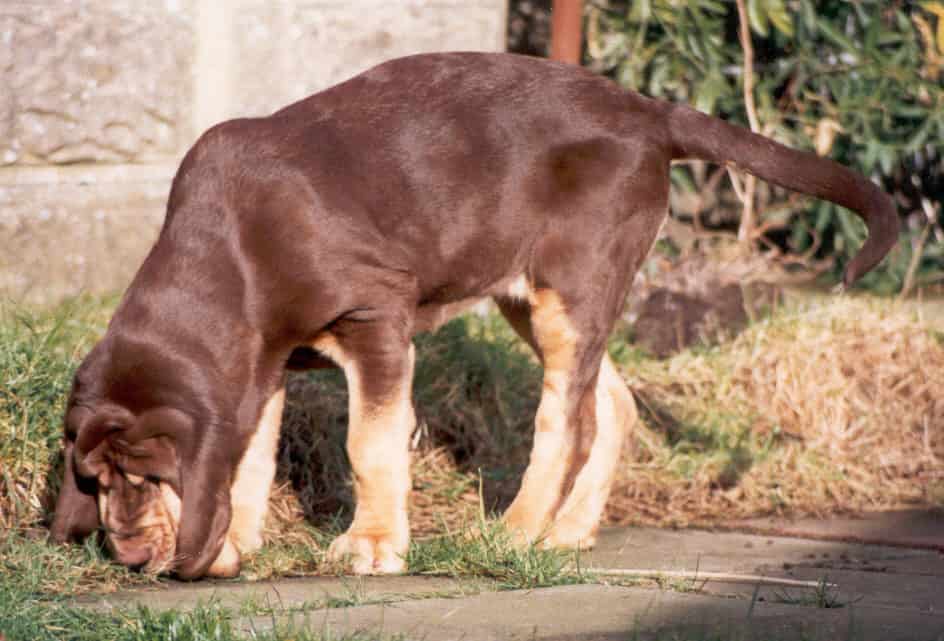
Today, bloodhounds make great working dogs and family pets.
©Cleanboot / public domain – License
Picture of a Fully Grown Bloodhound

A bloodhound is the first animal that had evidence successfully submitted in a court of law.
©Glikiri/Shutterstock.com
Other Dog Breeds Similar to Bloodhounds:
The photo featured at the top of this post is © Kuznetsov Alexey/Shutterstock.com
Ready to discover the top 10 cutest dog breeds in the entire world?
How about the fastest dogs, the largest dogs and those that are -- quite frankly -- just the kindest dogs on the planet? Each day, AZ Animals sends out lists just like this to our thousands of email subscribers. And the best part? It's FREE. Join today by entering your email below.
Thank you for reading! Have some feedback for us? Contact the AZ Animals editorial team.







